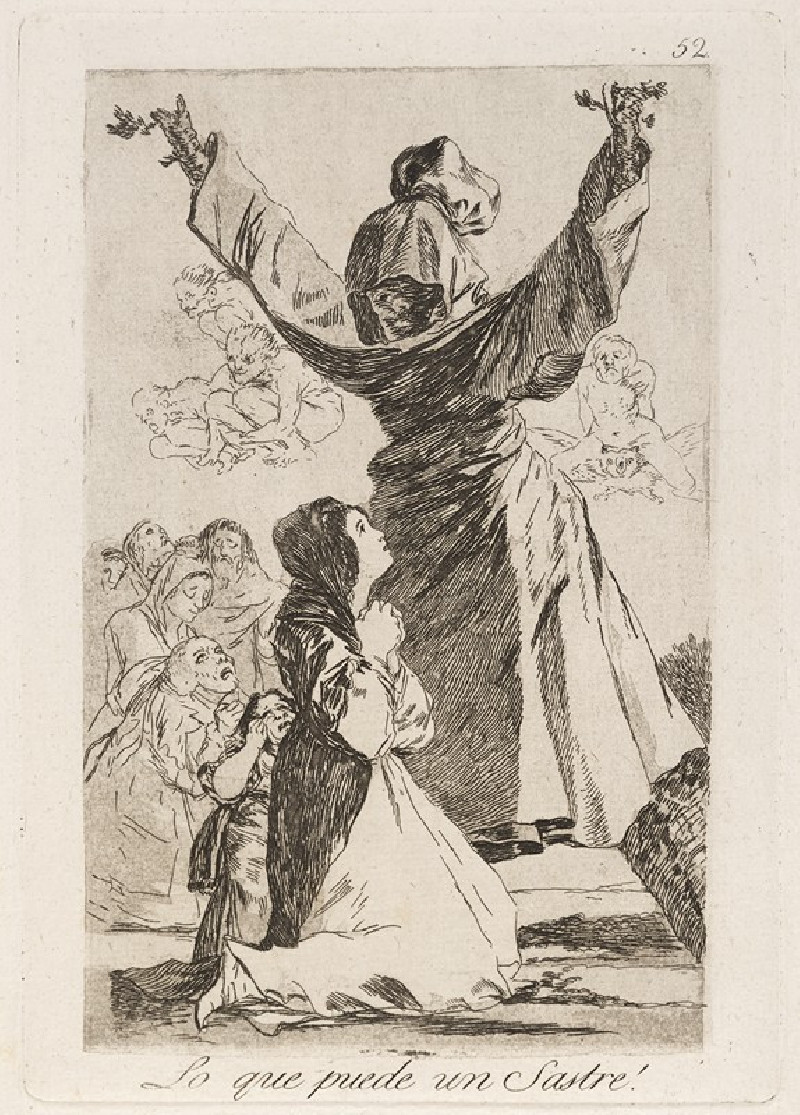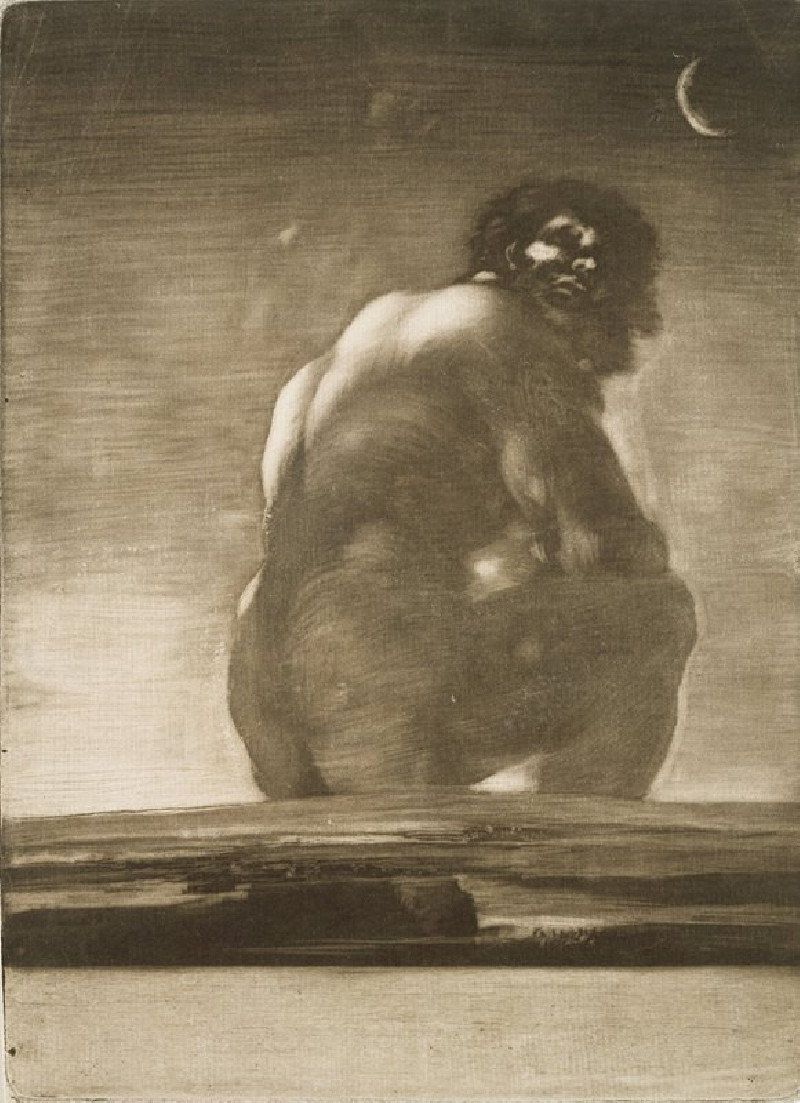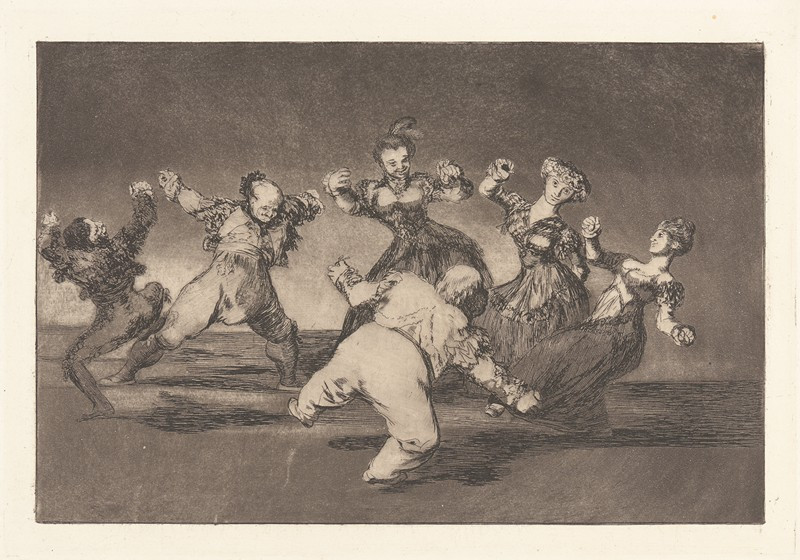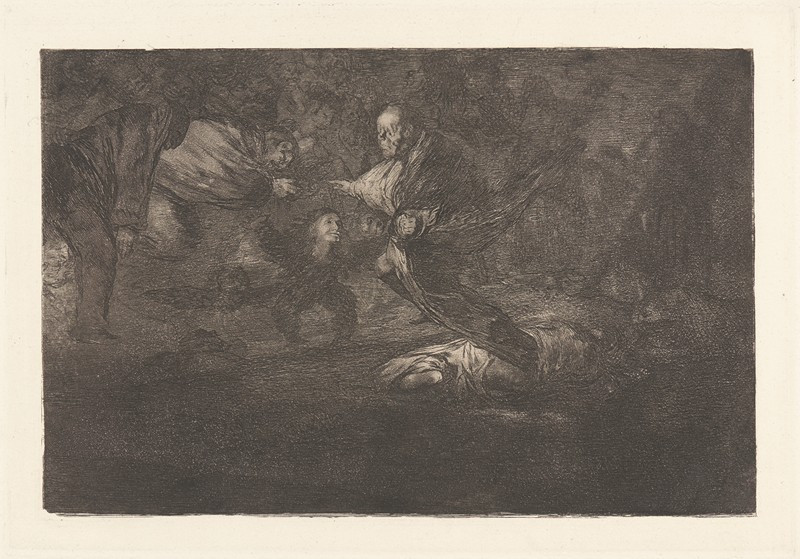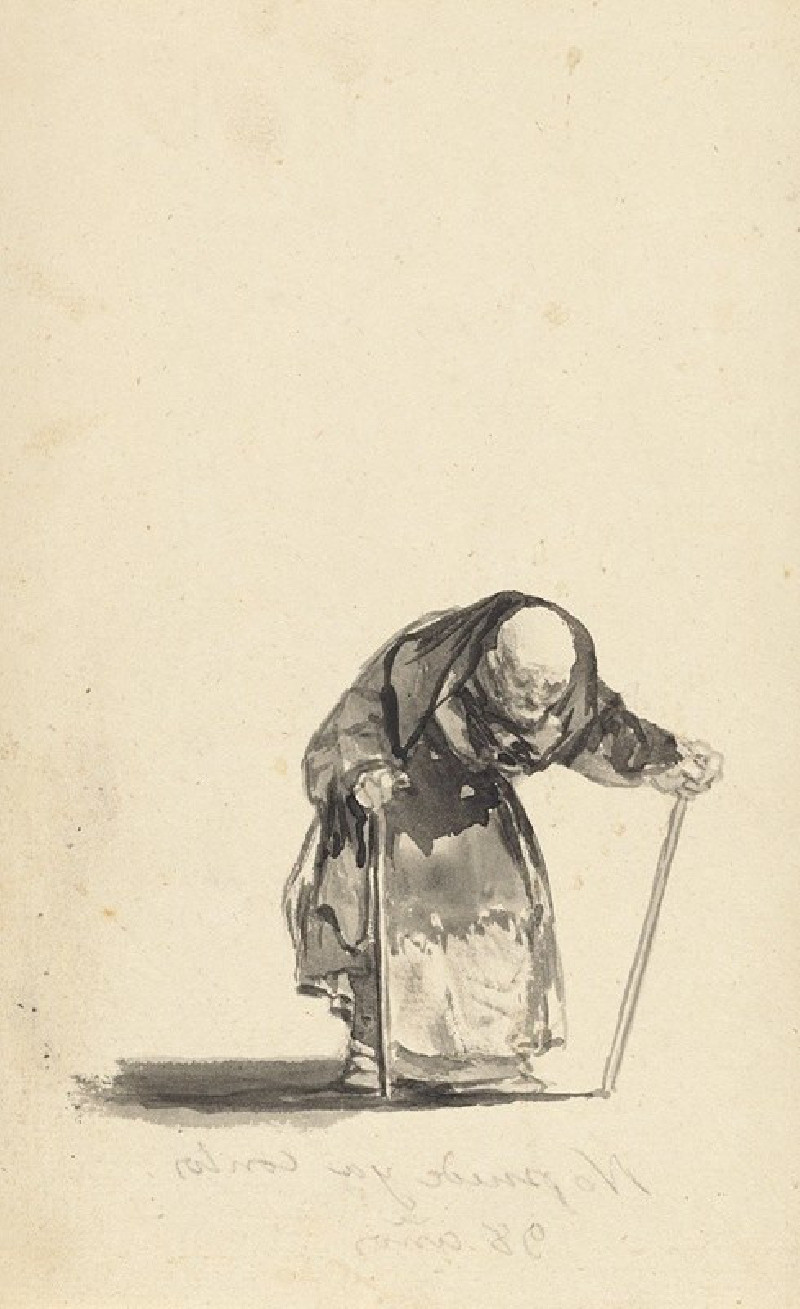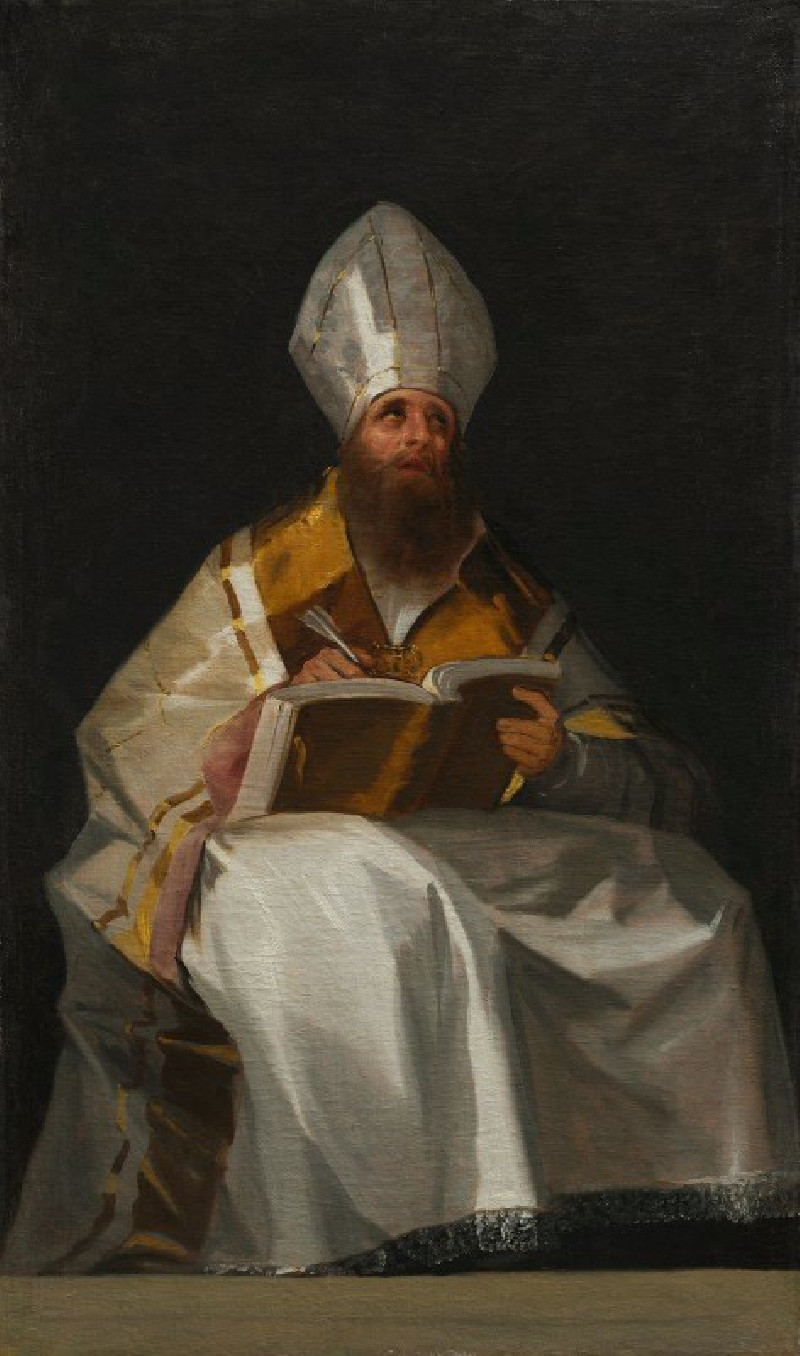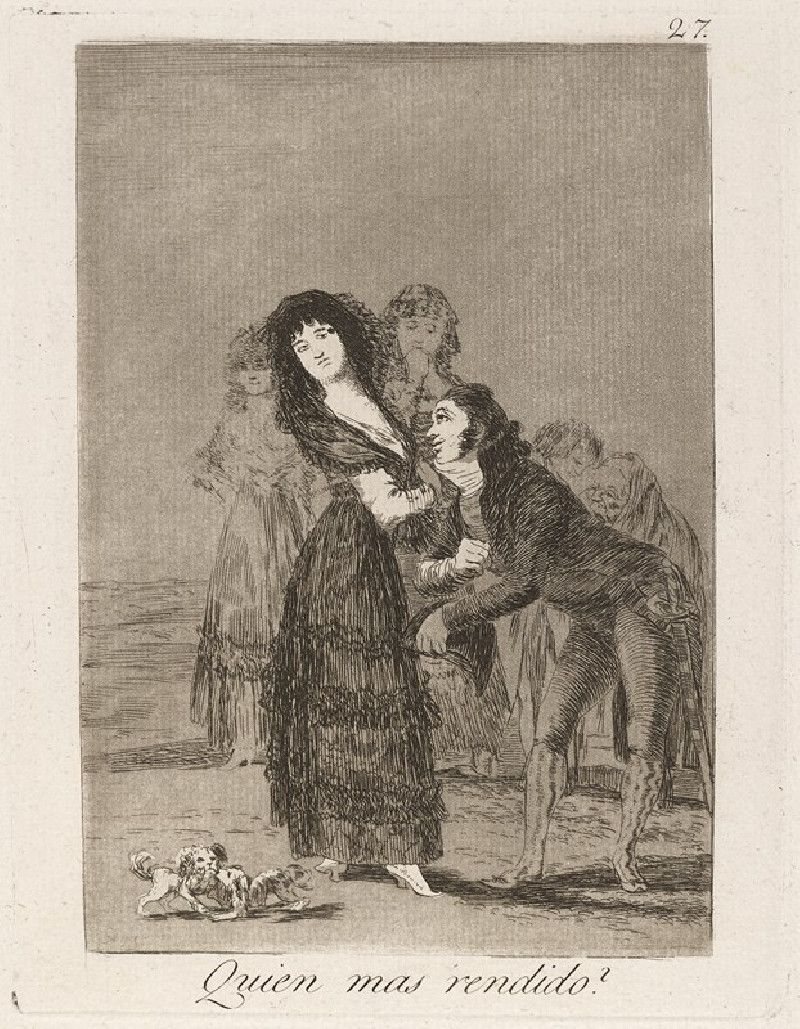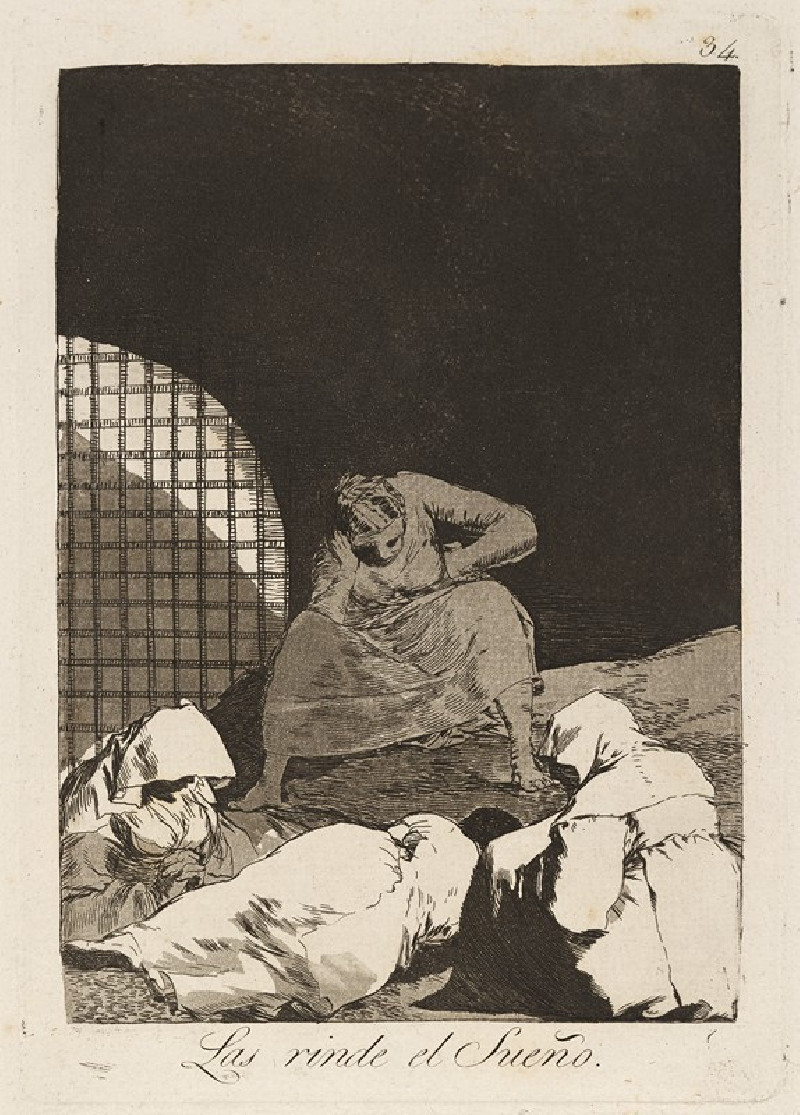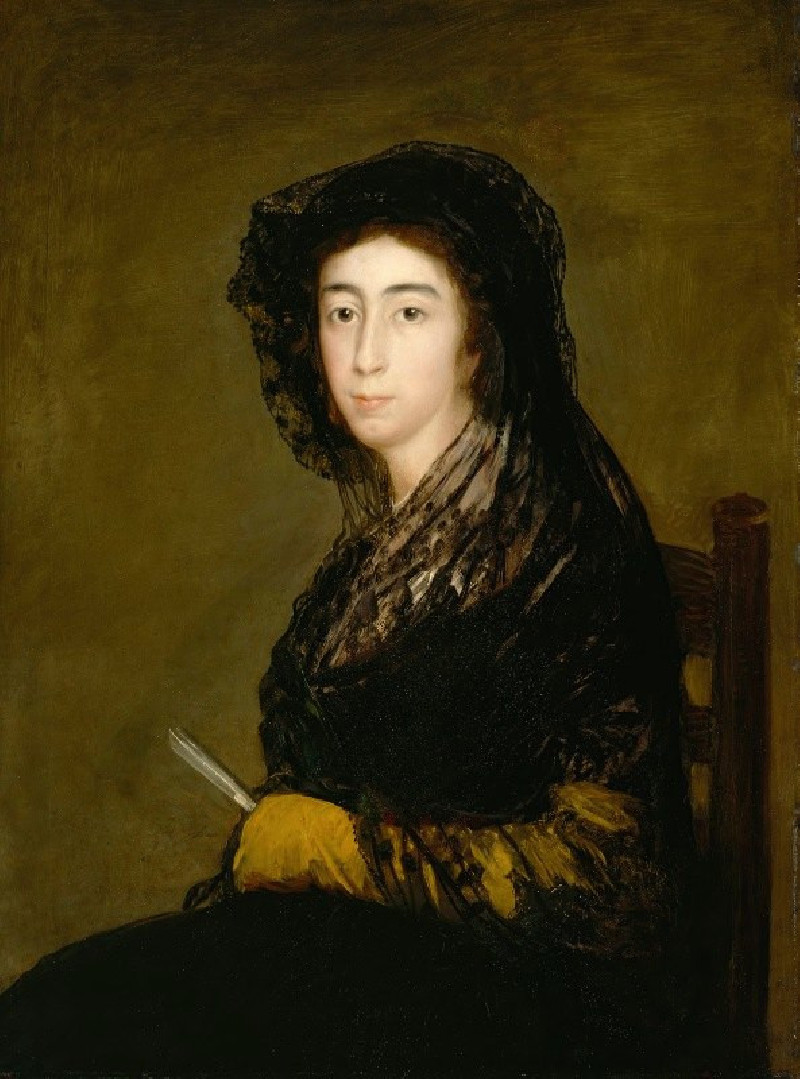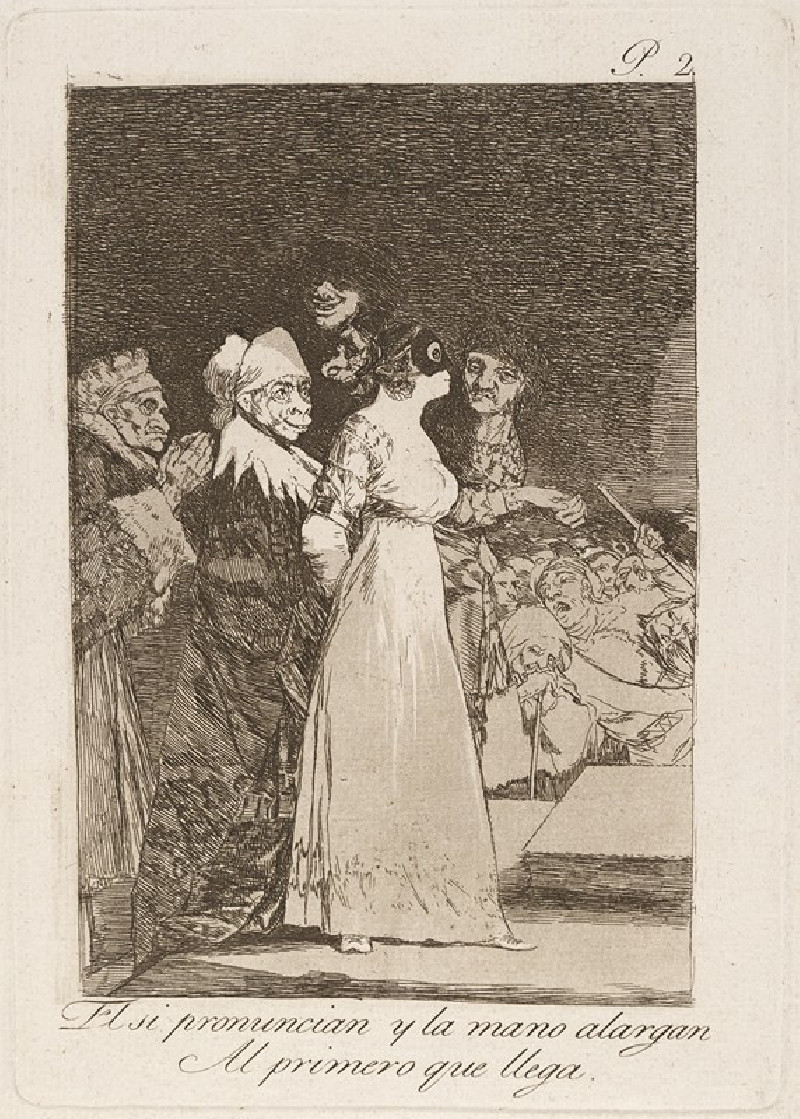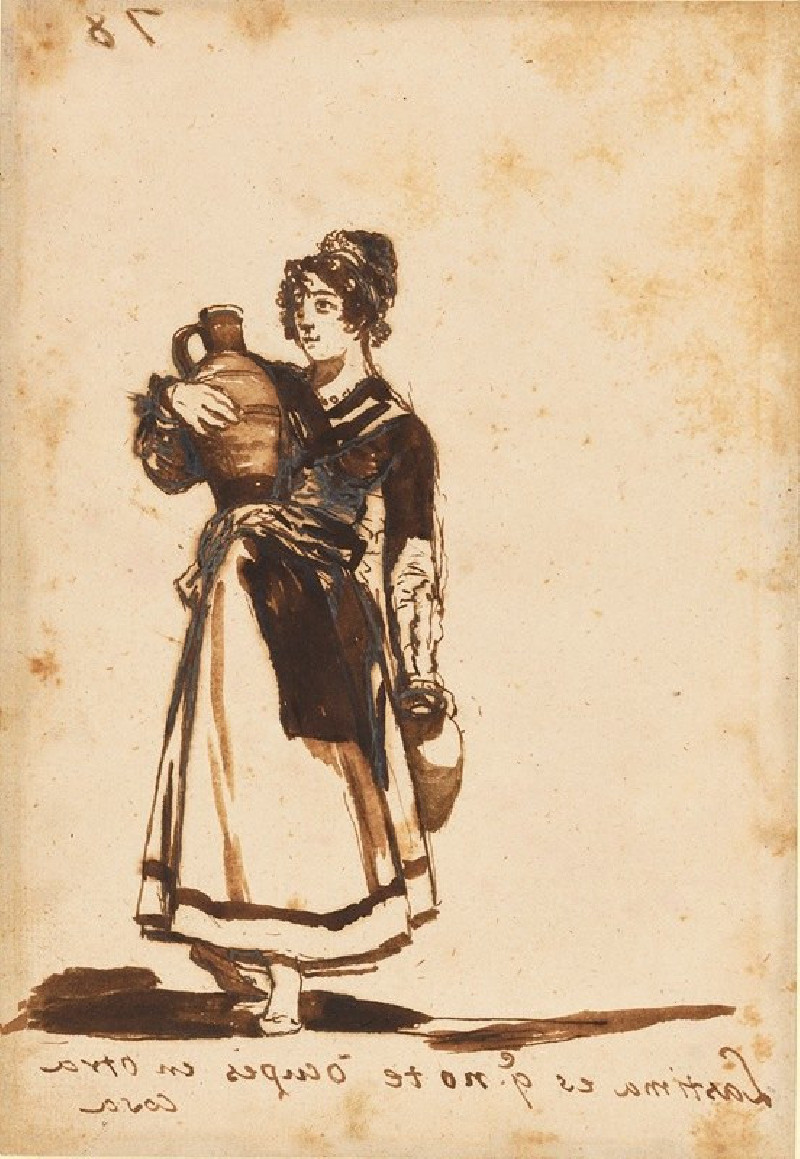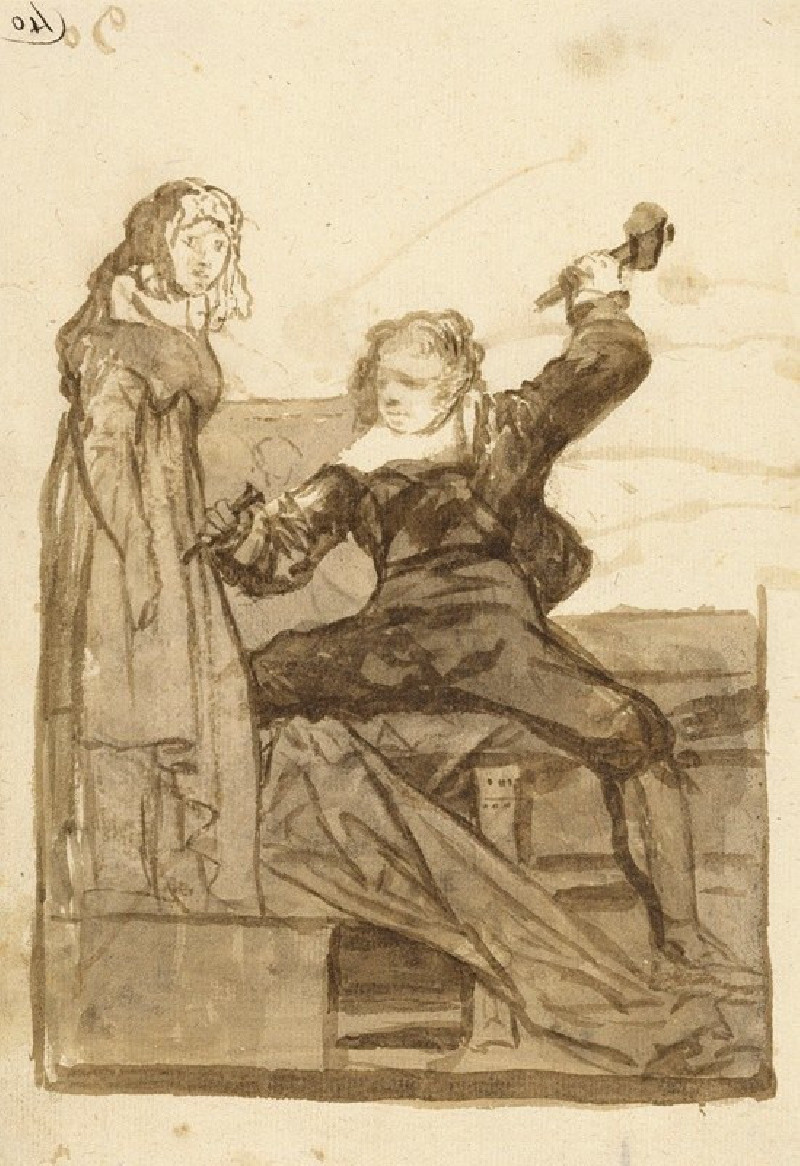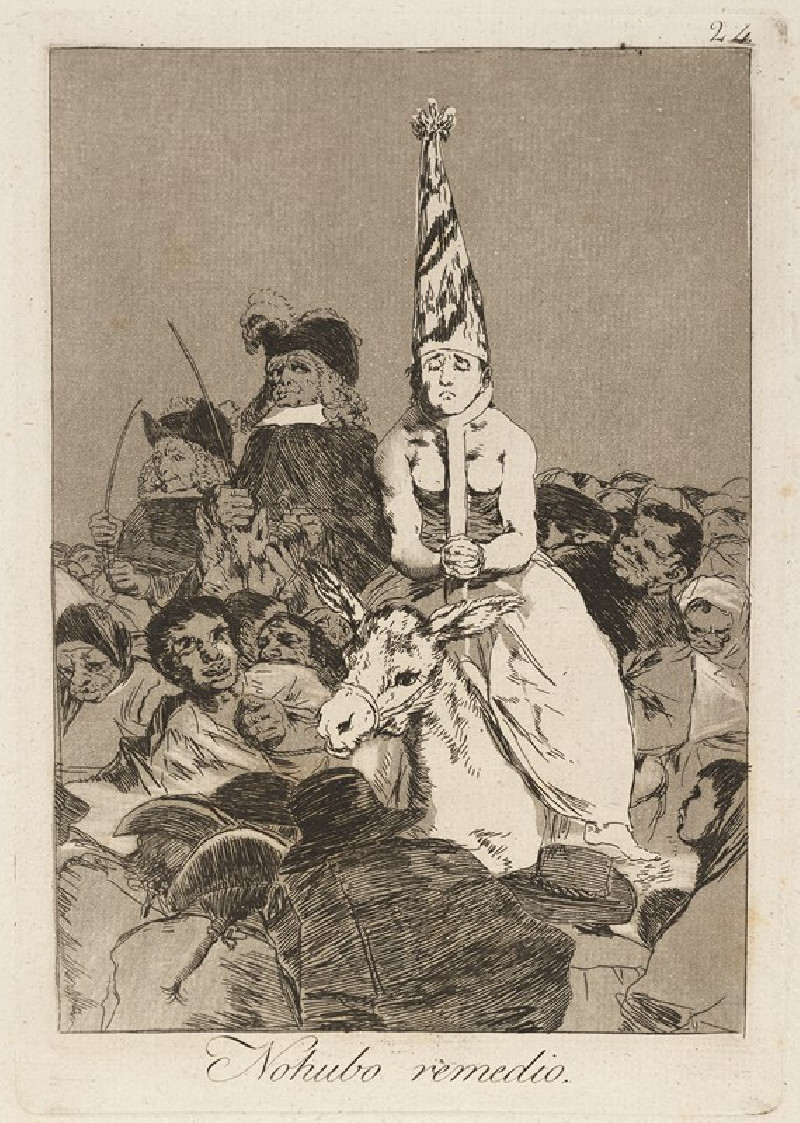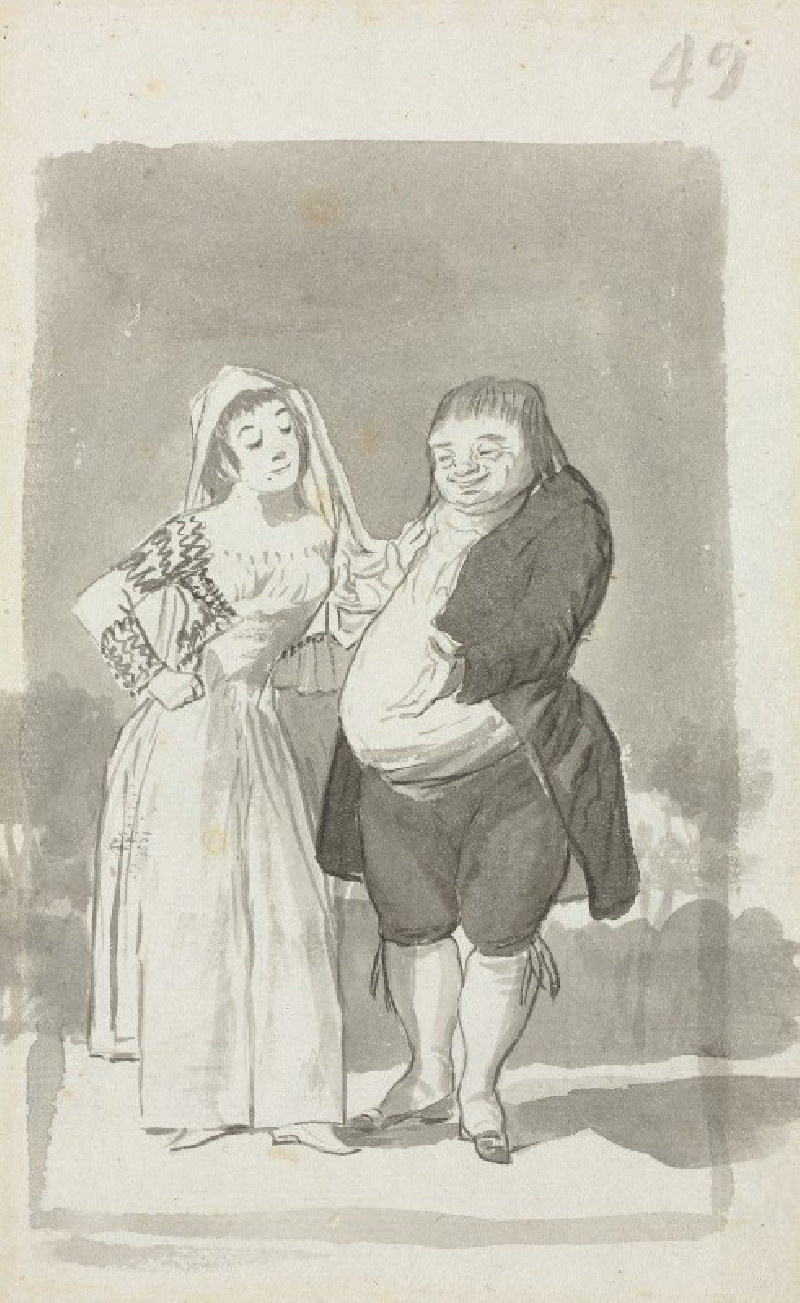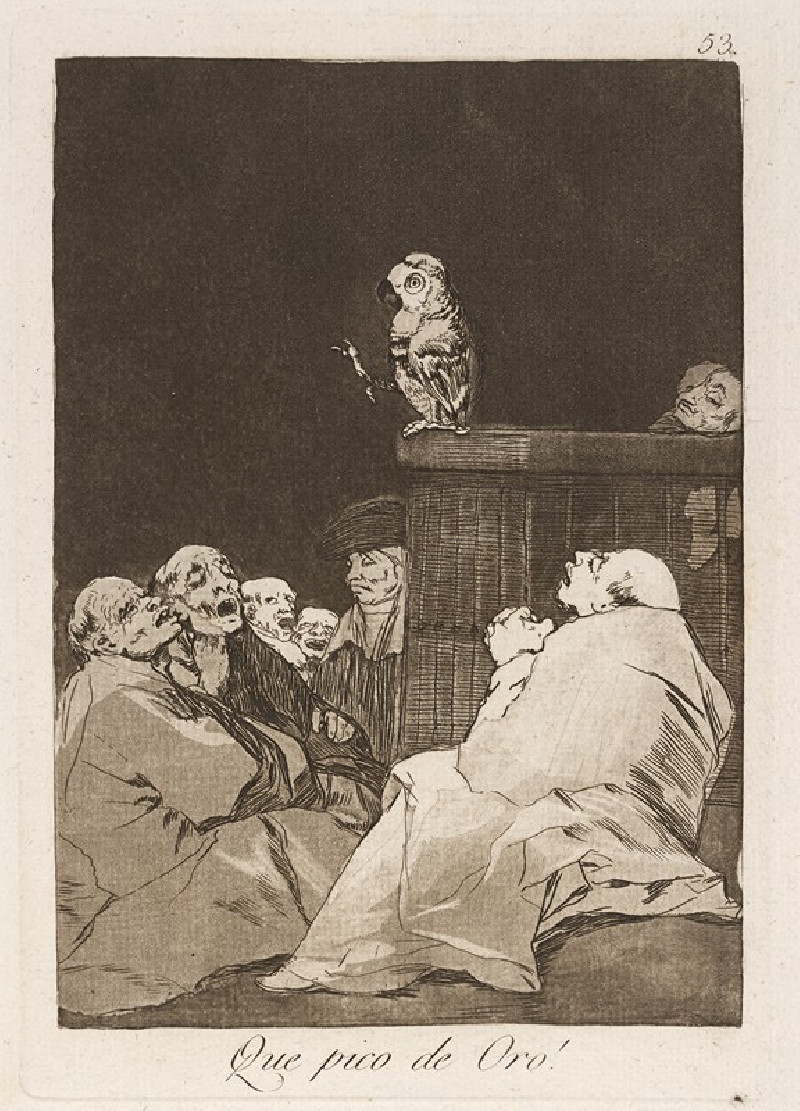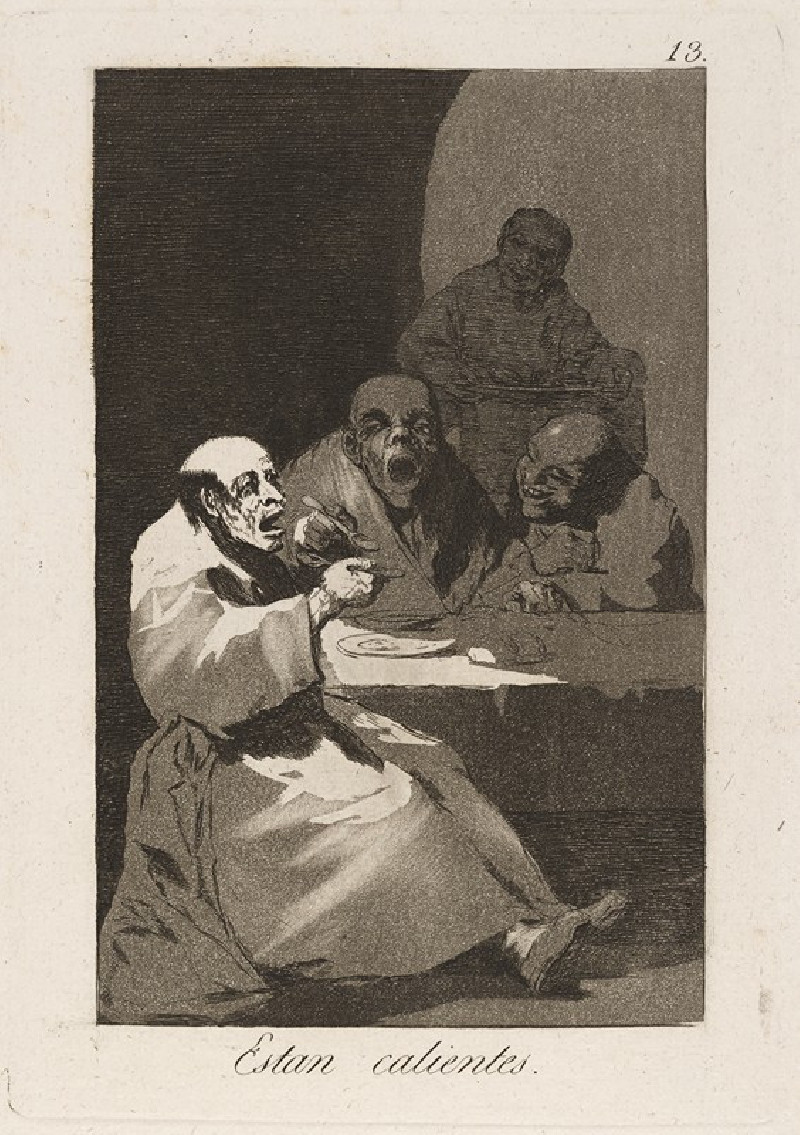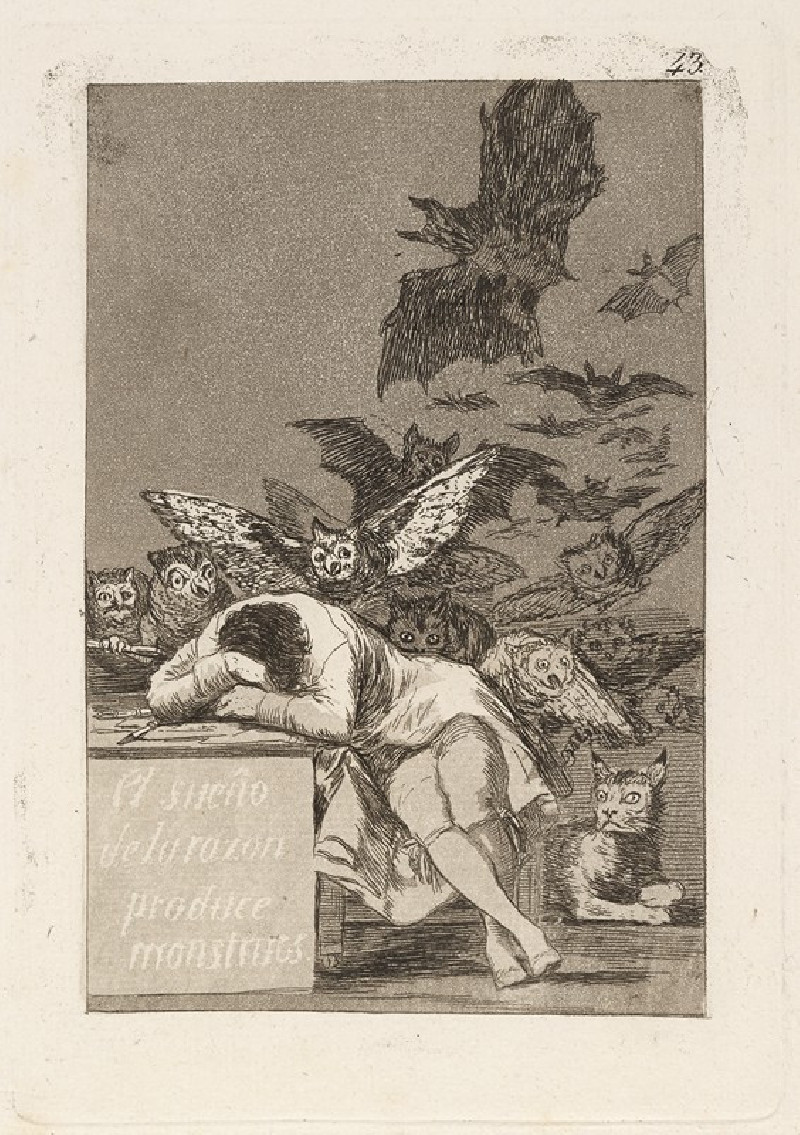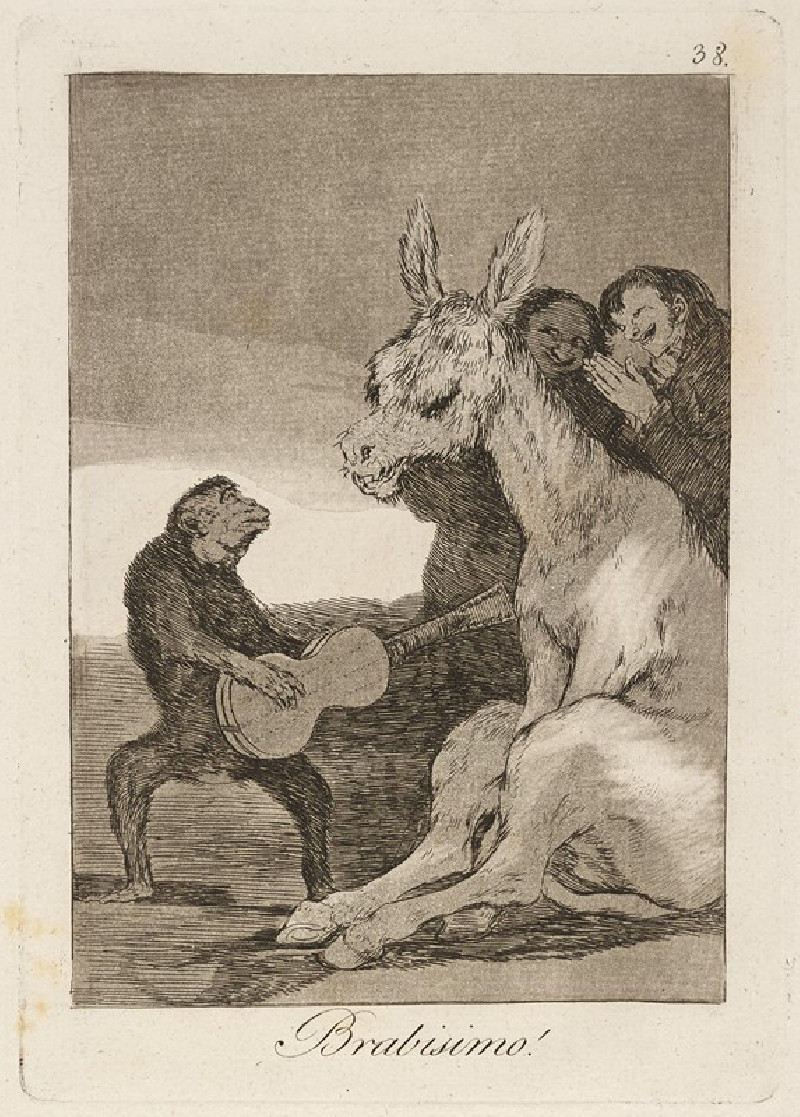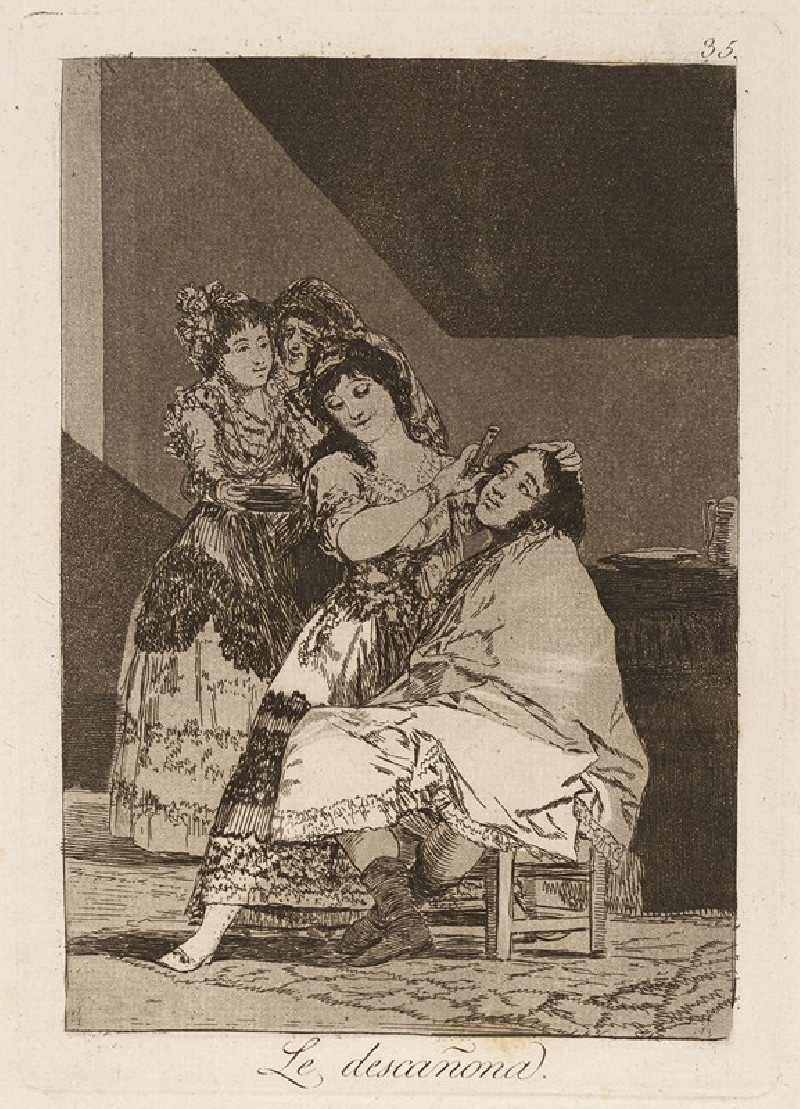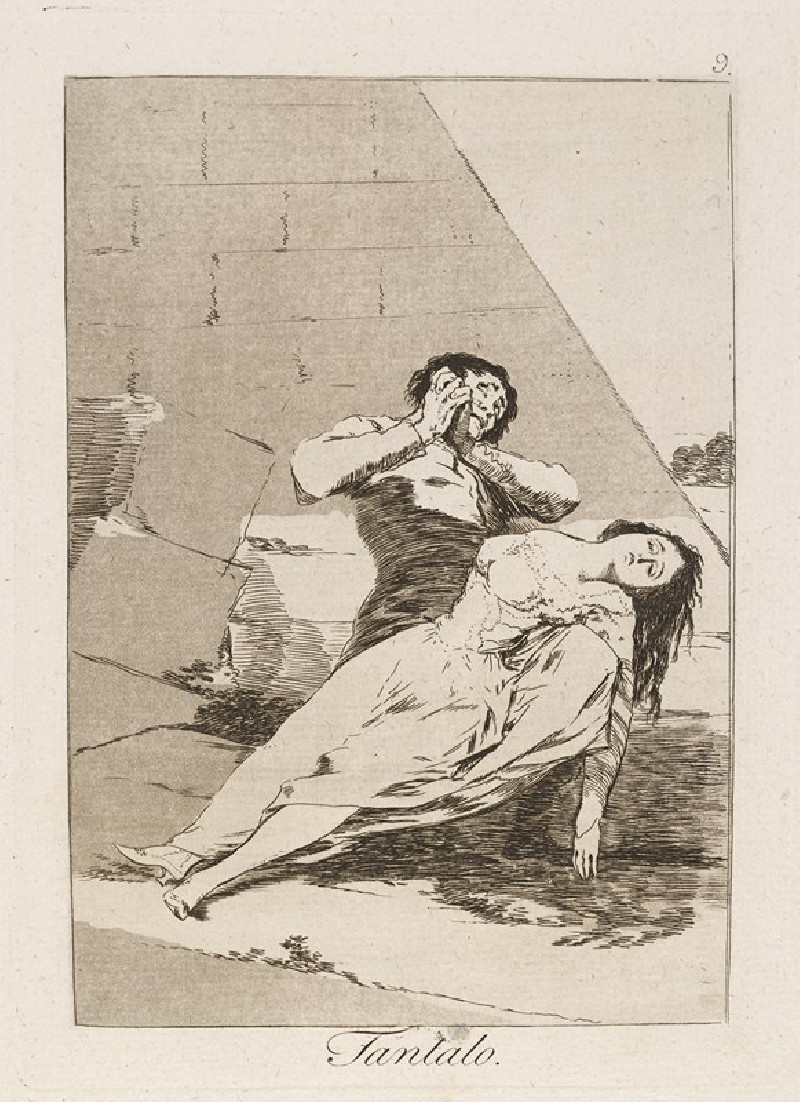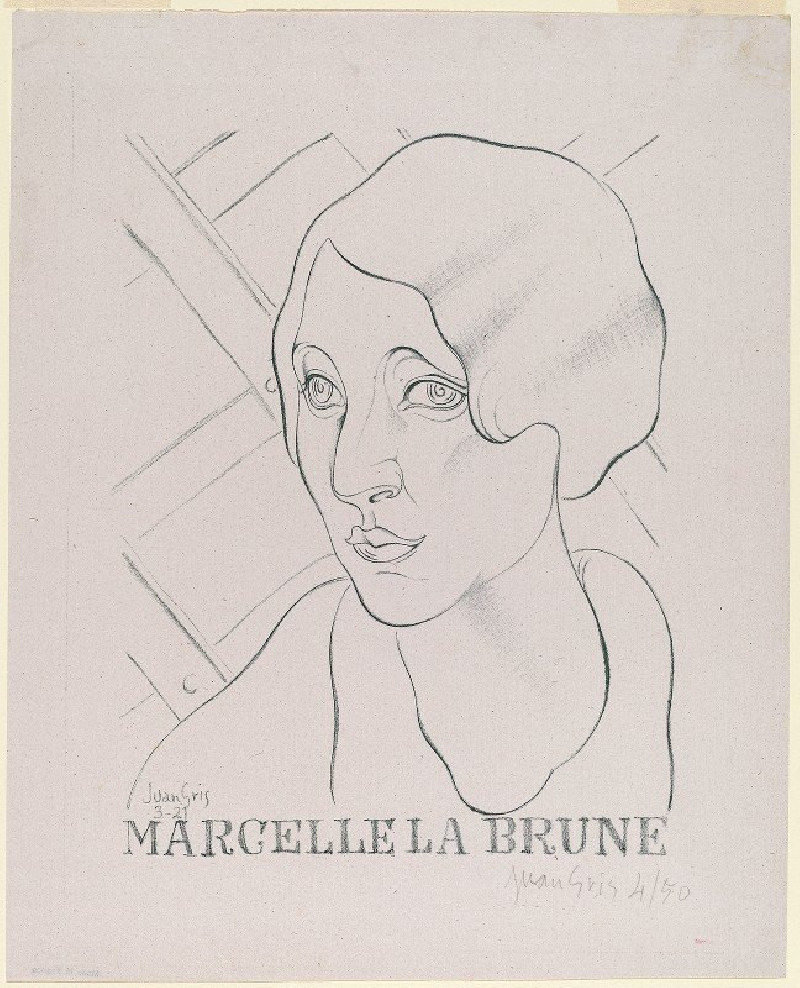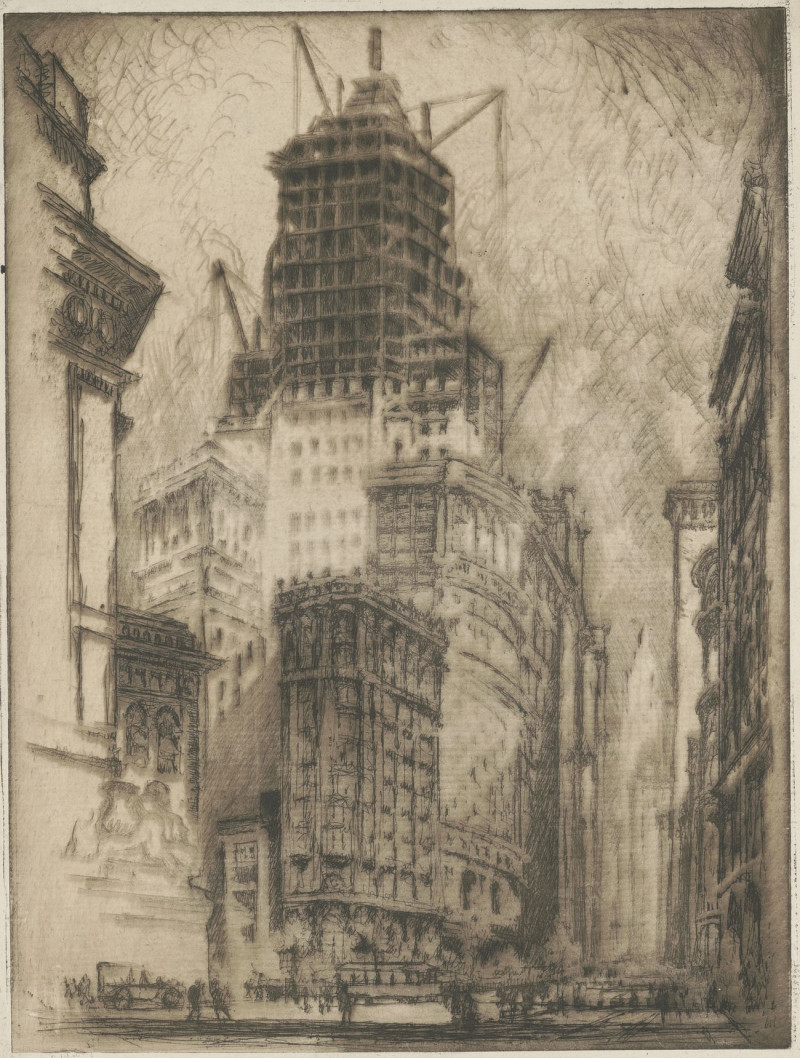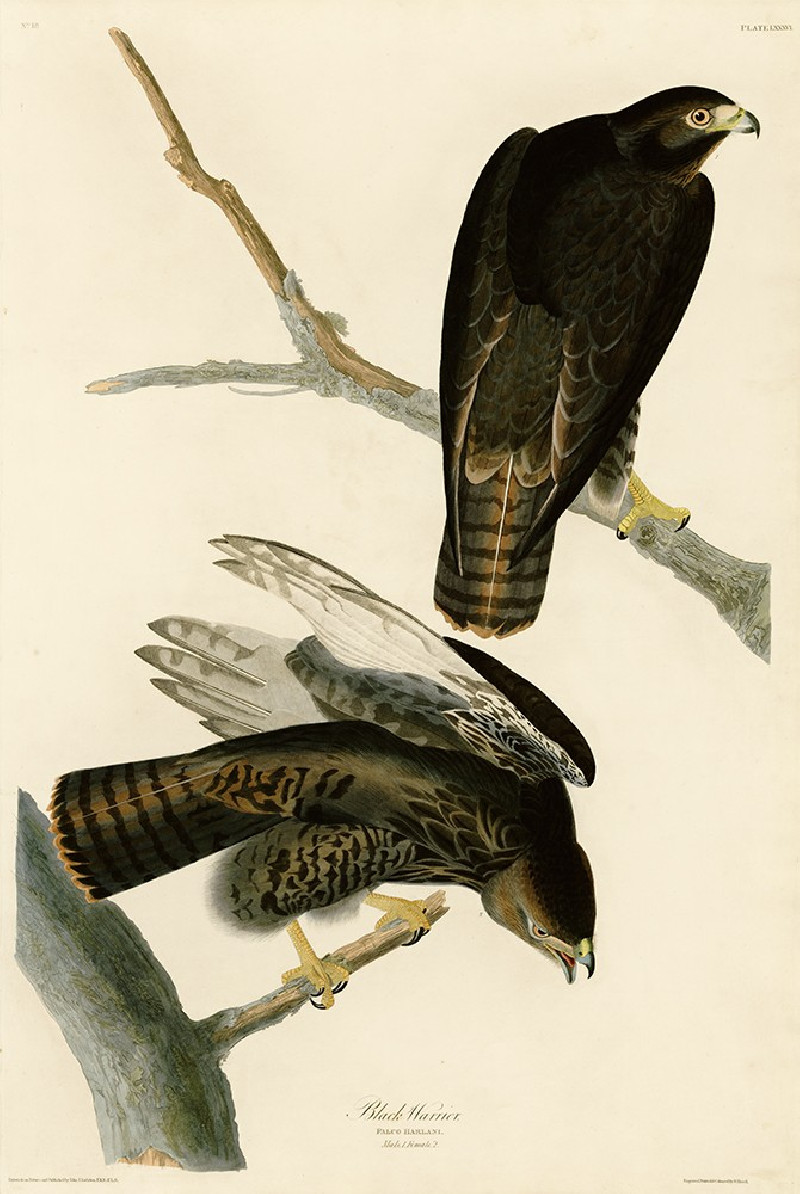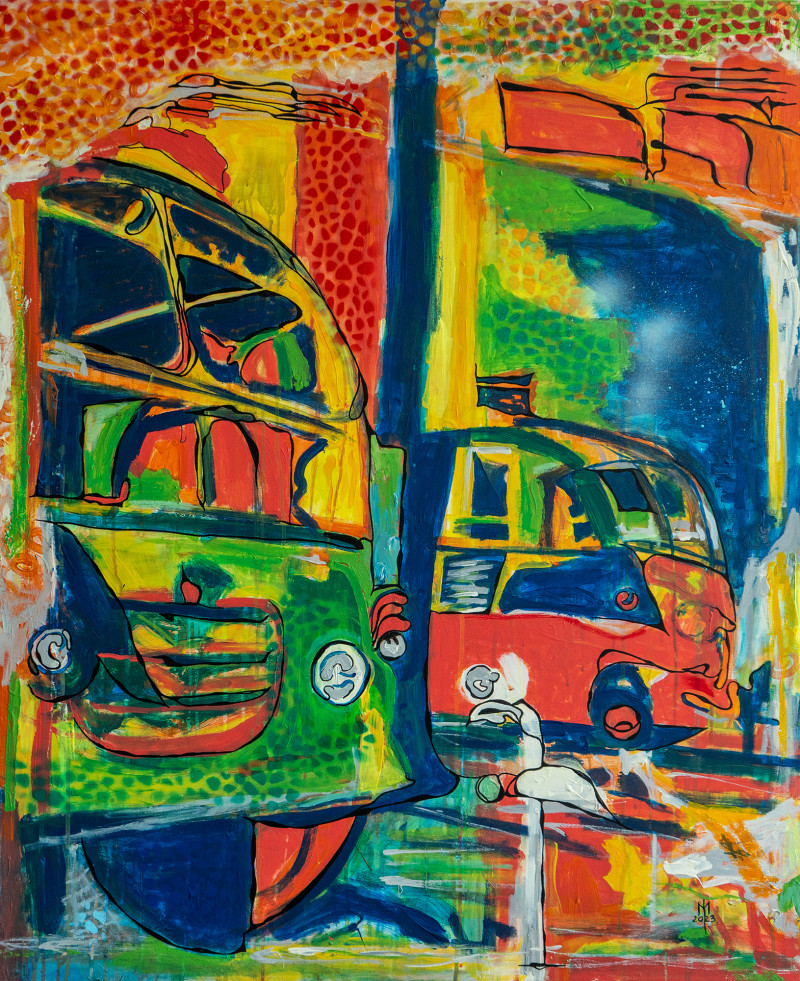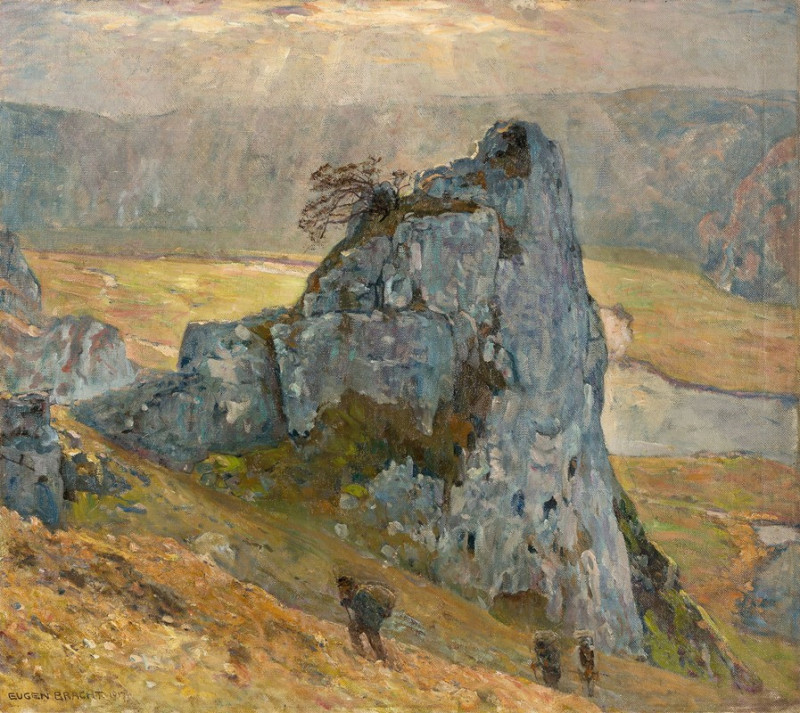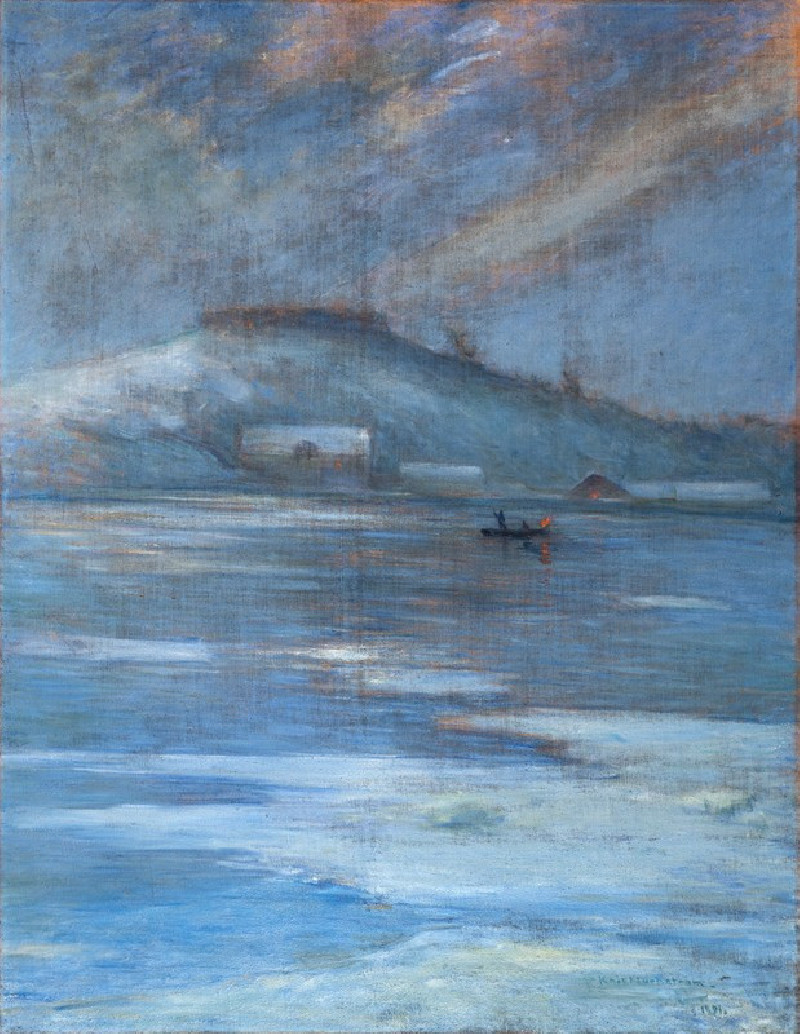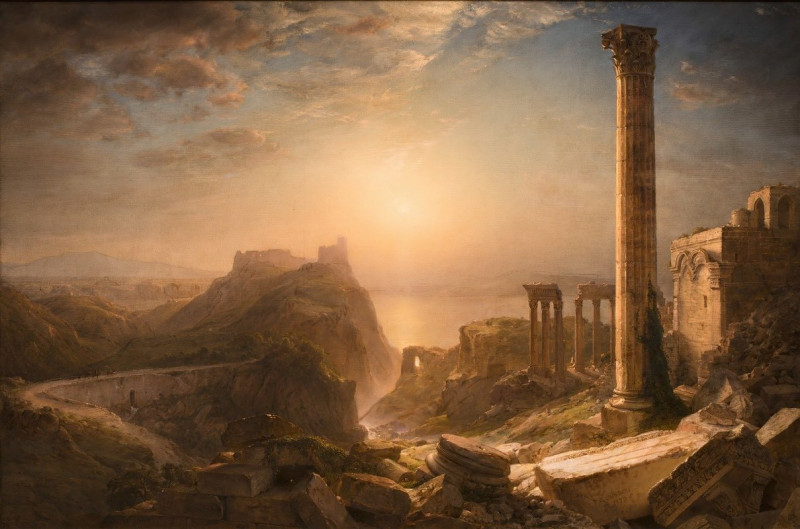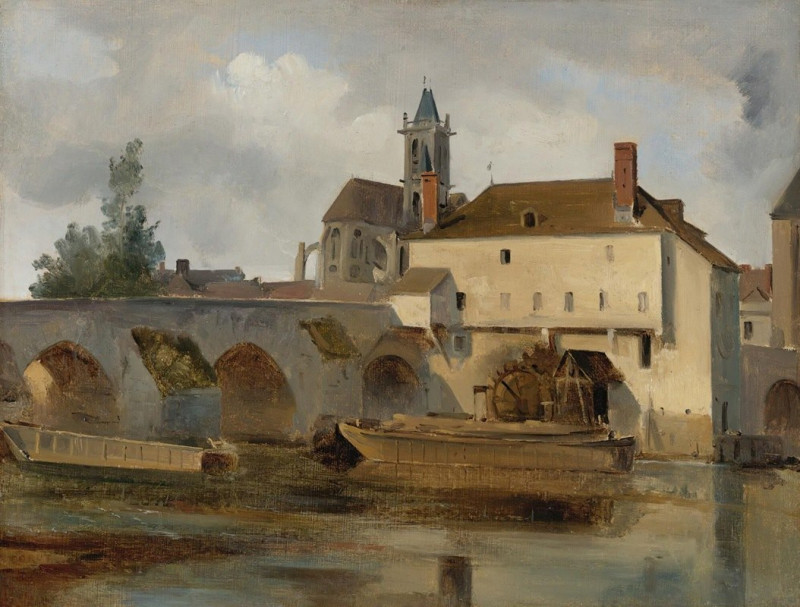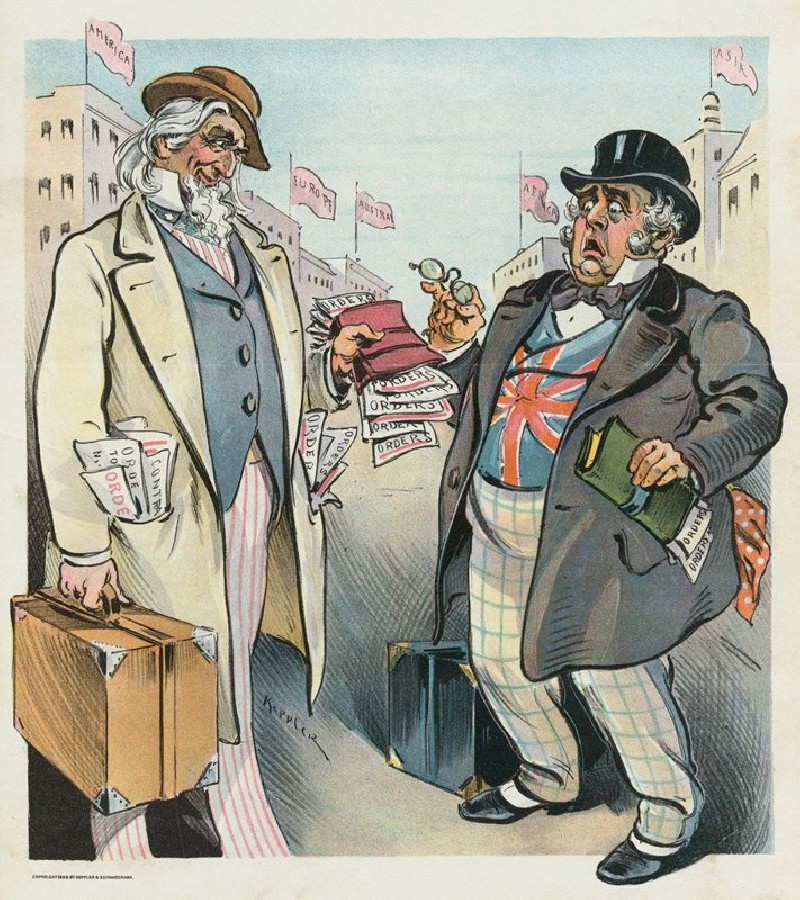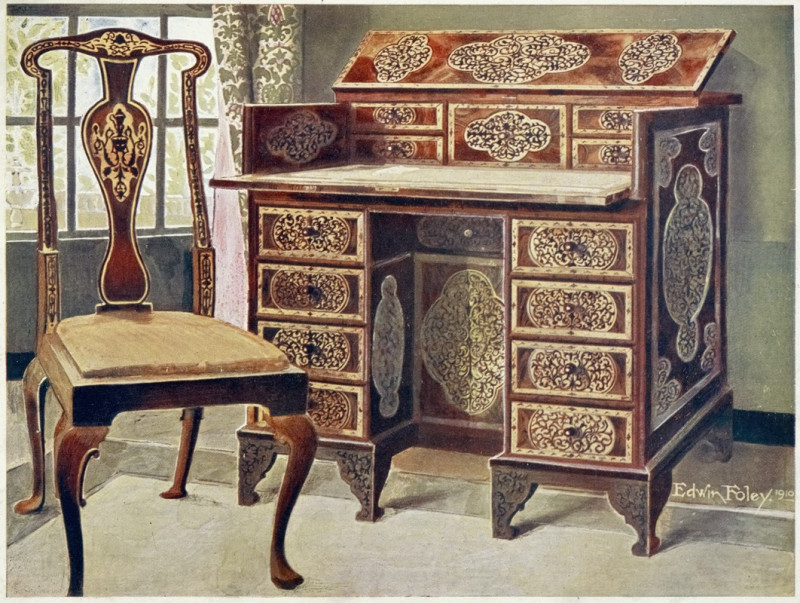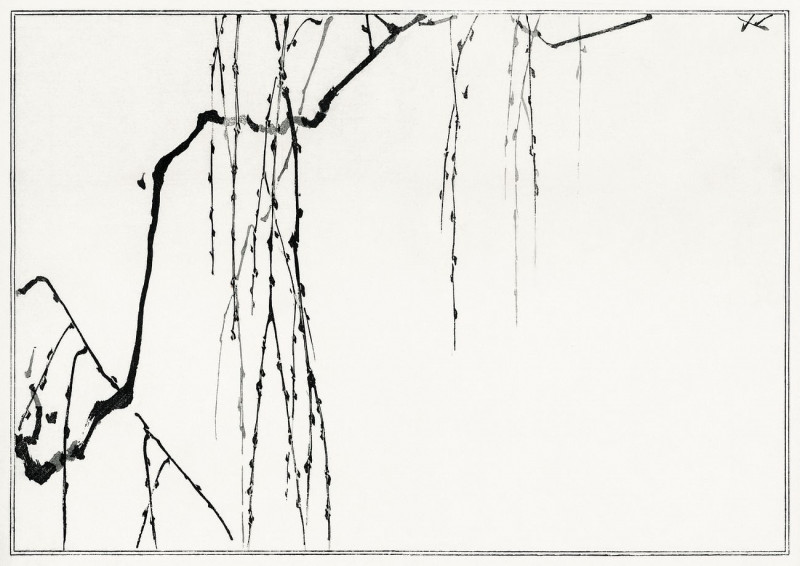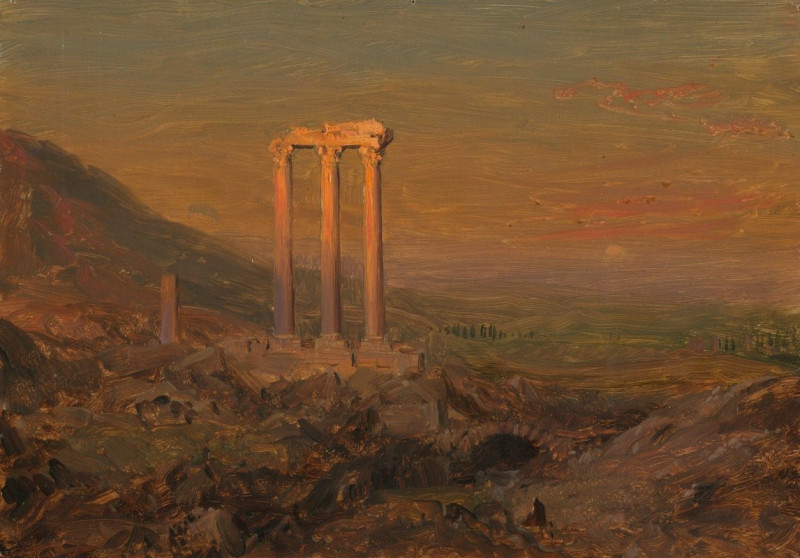Lo que puede un Sastre! (What a tailor can do!) (1796-1797)
Technique: Giclée quality print
Recommended by our customers
More about this artwork
Francisco de Goya, one of Spain's most revolutionary painters and printmakers, presents a compelling scene in the etching 'Lo que puede un Sastre!' (What a tailor can do!). Created between 1796-1797, this artwork is a part of Goya's famous series of etchings, offering a profound commentary on societal norms and human behaviors.This specific piece showcases a towering figure, draped dramatically in voluminous garments that both conceal and amplify his form. The clothing, evidently crafted by a tailor, transforms the figure into an almost grotesque spectacle that steals the focus of all surrounding figures. Beneath this exaggerated ensemble, a group of onlookers, predominantly women and children, gaze up in awe or bemusement. The expressions range from shock and admiration to disbelief and fear, suggesting a mixed reception to the grandiose display.The title 'What a tailor can do!' reflects a satirical nod to the power of clothing and appearance, and perhaps, a critique of how society often values form over substance. Goya masterfully uses the language of clothing to question the constructs of social identity and the absurd lengths to which people go to impress or intimidate.This etching not only typifies Goya’s sharp critique of societal norms but also highlights his skill in using stark, dramatic imagery to provoke thought and dialogue about the human condition.
Delivery
Returns
Francisco José de Goya y Lucientes (30 March 1746 – 16 April 1828) was a Spanish romantic painter and printmaker. He is considered the most important Spanish artist of the late 18th and early 19th centuries. His paintings, drawings, and engravings reflected contemporary historical upheavals and influenced important 19th- and 20th-century painters. Goya is often referred to as the last of the Old Masters and the first of the moderns.

